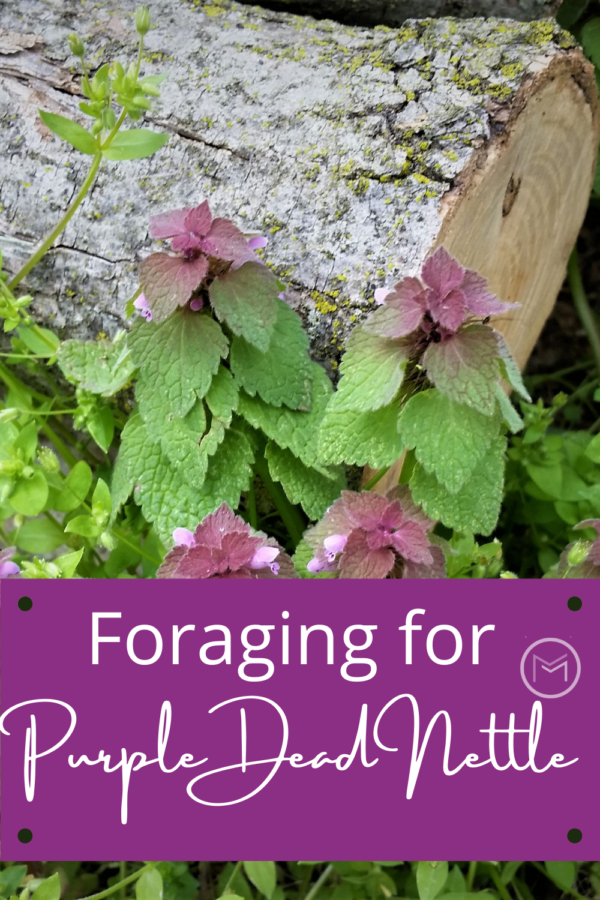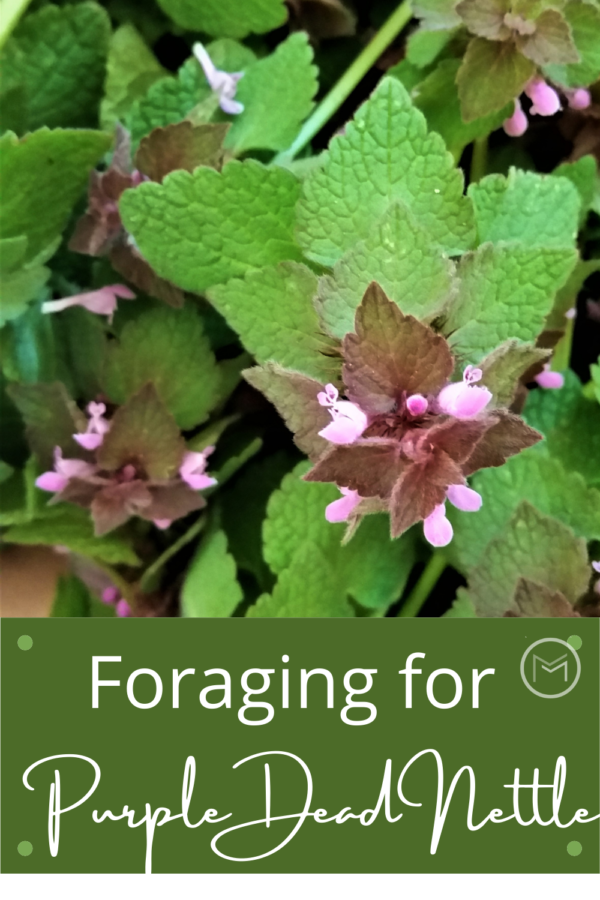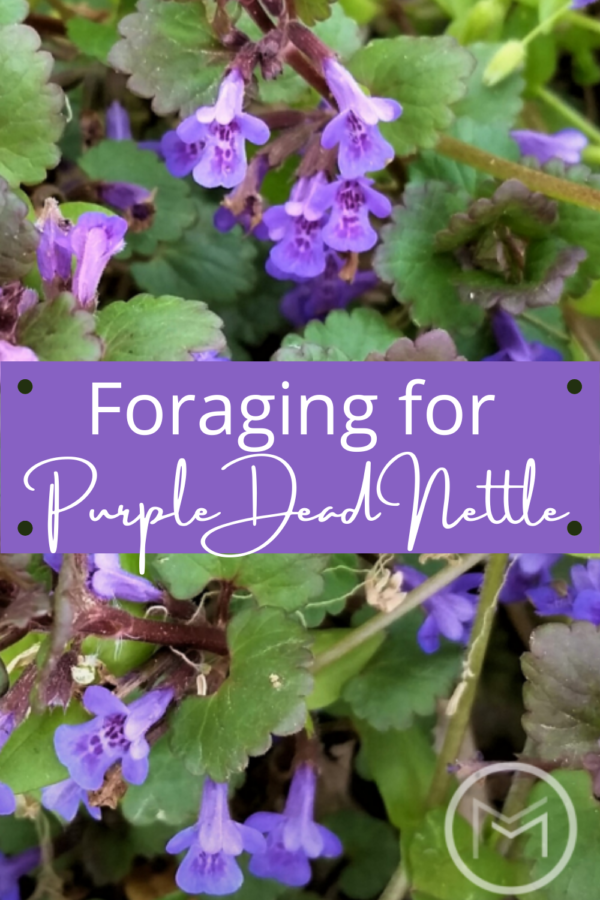Today, I’m sharing gardening tips on foraging for Purple Dead Nettle for beginners. My yard is filled with it. It can found in the front yard, along my back property line as well as in my vegetable garden. I bet you can find some in yours too.
So, I became interested in medicinal herbs when I was enrolled in my master gardening course. I had already incorporated kitchen garden herbs into my life. But, learning about medicinal herbs and how to use them was a new experience. I was amazed at the wild/medicinal herbs that I had growing in my own backyard.

First, many herbs that people forage are known as weeds to many. They don’t realize that our ancestors used wild herbs for food, medicine, salves and more. Sadly, I was new to wild herbs so I was hesitant about ingesting and using wild herbs when I first started foraging too.
Fortunately, Purple Dead Nettle is packed with Vitamin C, iron, antioxidants, and fiber. It’s an herb worth foraging. I love making infused oil with it. It’s great as a salve for dry skin or skin irrigations.
Foraging for Purple Dead Nettle:
Here’s a few uses for Purple Dead Nettle:
- Salve
- Astringent
- Culinary (Salads)
- Smoothies with bananas
- Pollinators
- Spring bouquets
- Diuretics
- Laxative
- Tea
- Pesto
- Garnishes
- Spring Bouquet
So, Purple Dead Nettle is a member of the mint family. You can tell that it’s a member by the square stem. It originated in Europe and Asia. Mint is consider an invasive plant. However, Purple Dead Nettle grows outside so let it grow. Also, it grows about 8 – 10 inches high and boasts delicate purple or pink flowers. The darker the leaf on the plant the sweeter it’s taste. In addition to the purple and/or pink flowers, the stem on the Purple Dead Nettle is square giving it a unique appearance. Also, the leaves are fuzzy rather than smooth.

Look for Purple Dead Nettle in the spring. In the summer, it has a tendency to falter. As a result, stock up in the spring. You can always dry and store it for use in tea and making infused oils.
First, here’s a few pictures on what you should look for when foraging Purple Dead Nettle. Dead Nettle doesn’t sting, but the wild herb Nettle does sting. Study the pictures. I guarantee, you have plenty growing on your property or can find some on one of your walks. All of these pictures are from my yard.

Foraging for Purple Dead Nettle:
- Take a pair of scissors or garden shears
- Bring a basket or container
- Take a few pictures
- Know that they house ants
- Ants carry the seeds to their colony
- Use the shears or scissors to cut the plant
- Shake your plants to dislodge ants. They are there, trust and believe that.
Last, if you have decent weather I would suggest that you dry your newly harvested plants outside. If you don’t have an herb drying tray, use an old towel. Actually, if I’m drying the herb inside I prefer using an old towel. I pick up the harvested Purple Dead Nettle, and drop them numerous times on the towel. The ants will scatter. Do this several times a day for several days to dislodge all of the ants. Take your towel outside and shake it vigorously to get rid of the ants.
If I’m drying the herbs outside, I take the same steps. Remove the herbs, turn the tray over, and tap the bottom until the ants are removed.
Finally, have fun foraging this valuable herb. Once you start foraging for one, you won’t want to stop. You may also like The Benefits of Lavender and Lamiyum Purpureum (the scientific name for Purple Dead Nettle).






Speak Your Mind